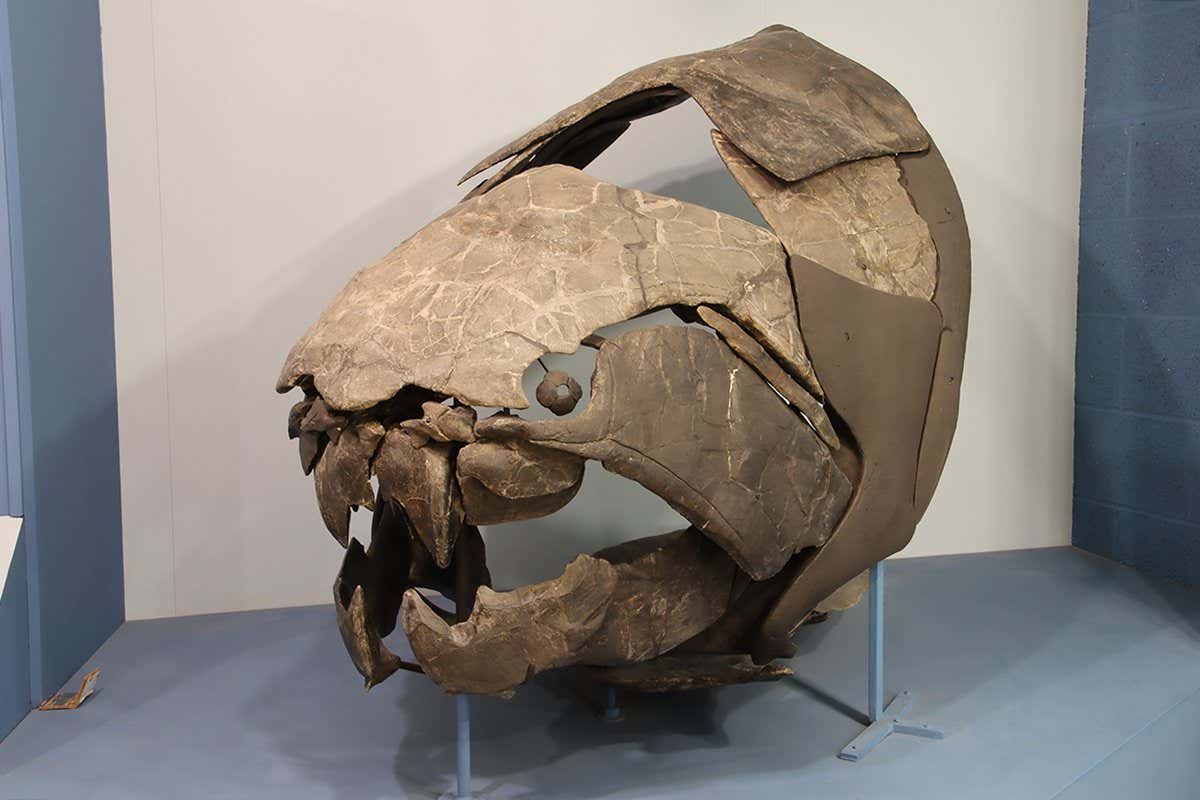Rethinking Size: Ancient Fish vs. Sharks – A Clash of Titans Through Time
For millions of years, the oceans have been ruled by apex predators. While sharks immediately spring to mind, a fascinating look at prehistoric marine life reveals a surprising contender for the title of "largest ocean dweller": ancient fish. This article delves into the incredible size of these prehistoric giants, comparing them to modern sharks and re-examining our understanding of marine megafauna dominance.
The Gigantic Fish of the Past: A Look at Leedsichthys problematicus
One of the most impressive examples of ancient colossal fish is Leedsichthys problematicus. This filter-feeding behemoth, which lived during the Jurassic period (approximately 189 to 145 million years ago), is estimated to have reached lengths of up to 20 meters (66 feet)! That's longer than a modern-day school bus! Fossil evidence, although fragmented, suggests a body structure unlike any modern fish, hinting at a unique adaptation to its filter-feeding lifestyle.
-
Size Comparison: While the exact size remains debated, even conservative estimates place Leedsichthys problematicus among the largest bony fish ever discovered. This dwarfs even the largest modern bony fish, the ocean sunfish (Mola mola), which rarely exceeds 3 meters (10 feet).
-
Lifestyle: Unlike predatory sharks, Leedsichthys was a filter feeder, consuming plankton and small organisms. Its massive size suggests a high energy requirement and an abundant food source in the Jurassic oceans.
-
Fossil Evidence: The ongoing discovery and analysis of Leedsichthys fossils are constantly refining our understanding of its size and biology. New findings regularly challenge previous assumptions, highlighting the complexity of reconstructing extinct organisms.
Modern Sharks: Apex Predators of Today
Modern sharks, renowned for their predatory prowess, are also impressively large. The whale shark (Rhincodon typus), the largest extant fish, can grow up to 12 meters (39 feet) long. However, its filter-feeding lifestyle contrasts sharply with the likely predatory nature of many ancient fish, making direct comparisons challenging.
-
Great White Sharks ( Carcharodon carcharias): Reach lengths of up to 6 meters (20 feet), demonstrating impressive hunting capabilities and a dominant position in the modern marine ecosystem.
-
Megalodon (Otodus megalodon): While extinct, the megalodon remains a powerful symbol of prehistoric marine dominance. Estimates of its size range from 15 to 20 meters (50 to 66 feet), placing it firmly in the running as a rival to Leedsichthys problematicus for the title of largest oceanic creature. Further research is needed to fully understand the relationship between these two giants.
The Ongoing Debate: Size, Dominance, and Ecological Roles
The comparison between ancient fish like Leedsichthys and modern sharks highlights the diversity of life in the oceans and the complexities of understanding extinct ecosystems. While size undoubtedly played a significant role in ecological dominance, the lifestyles and feeding strategies of these creatures were vastly different.
-
Environmental Factors: Oceanic conditions during the Jurassic period likely supported the evolution of such giant filter feeders, a stark contrast to the current marine environment.
-
Future Discoveries: Further paleontological research will undoubtedly uncover new insights into ancient fish and sharks, potentially challenging current estimations of size and ecological impact. The ocean's depths still hold many secrets!
Conclusion: A Rewriting of Prehistoric Marine History?
The discovery and study of colossal ancient fish like Leedsichthys problematicus forces us to rethink our understanding of prehistoric marine ecosystems. While sharks undoubtedly held – and continue to hold – significant roles as apex predators, the sheer size of some ancient fish challenges the traditional narrative of shark dominance. The ongoing research in paleontology promises to further refine our understanding of this fascinating competition for the throne of the ocean's giants. Stay tuned for future discoveries that might just rewrite marine history once again!

